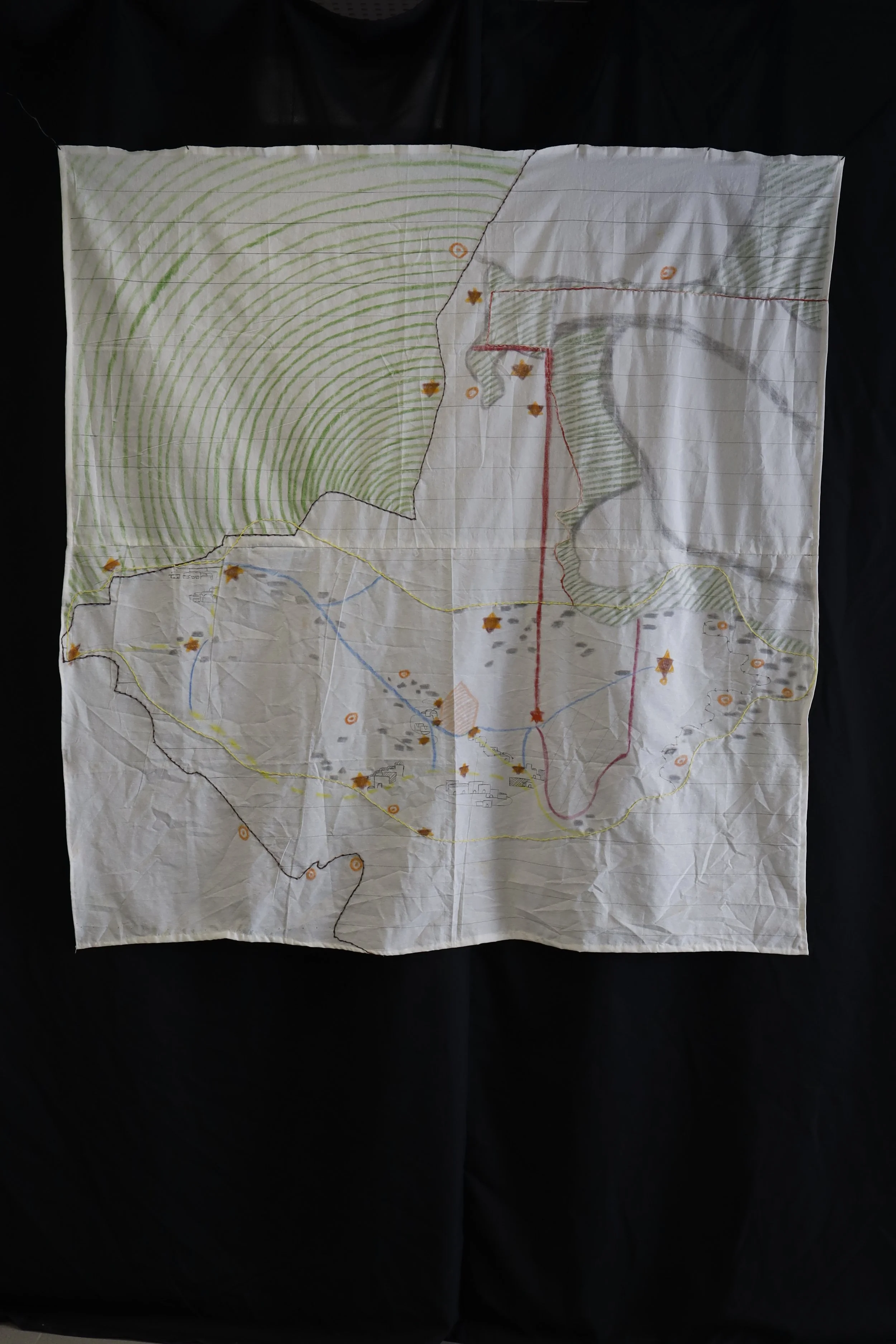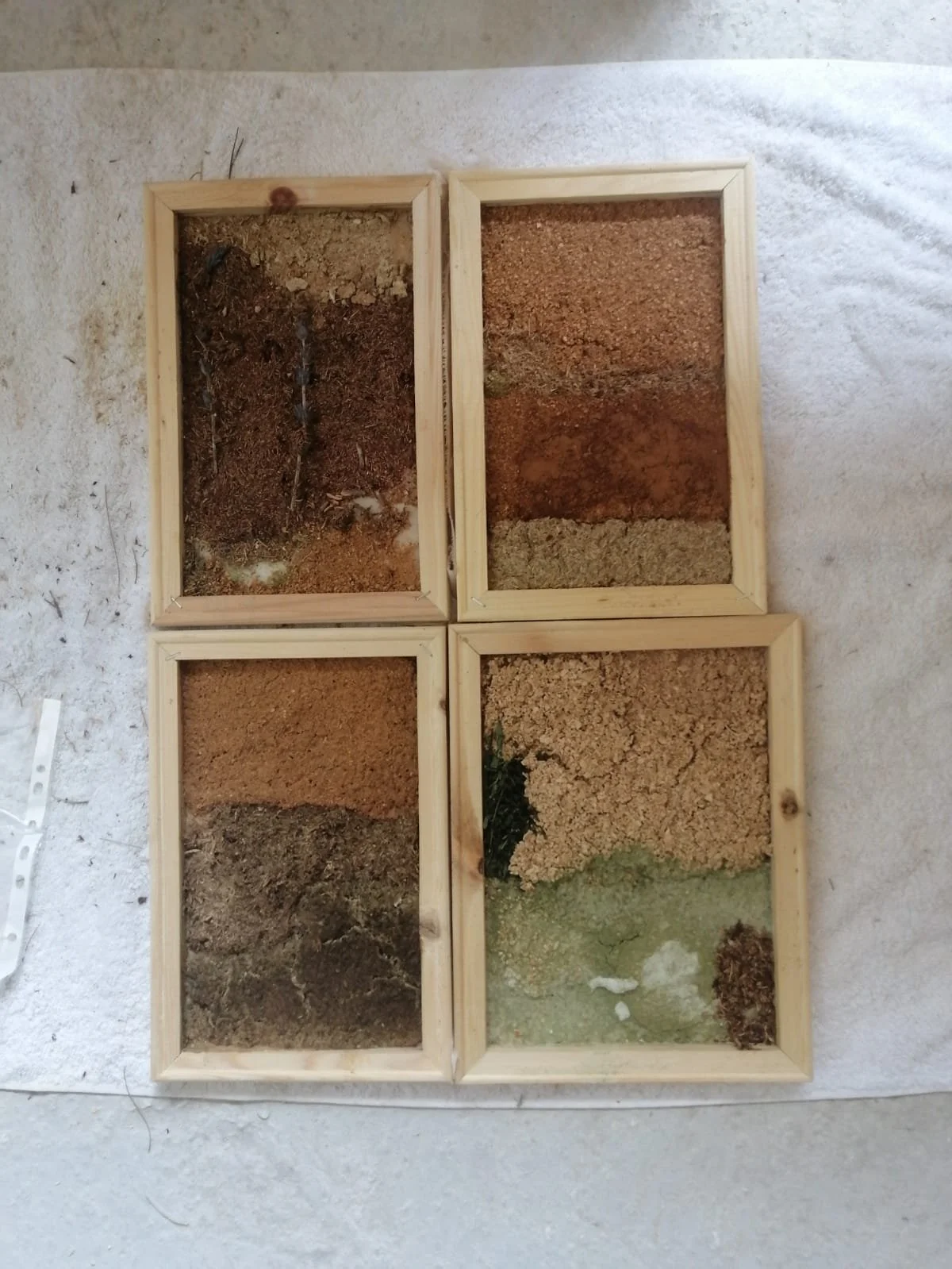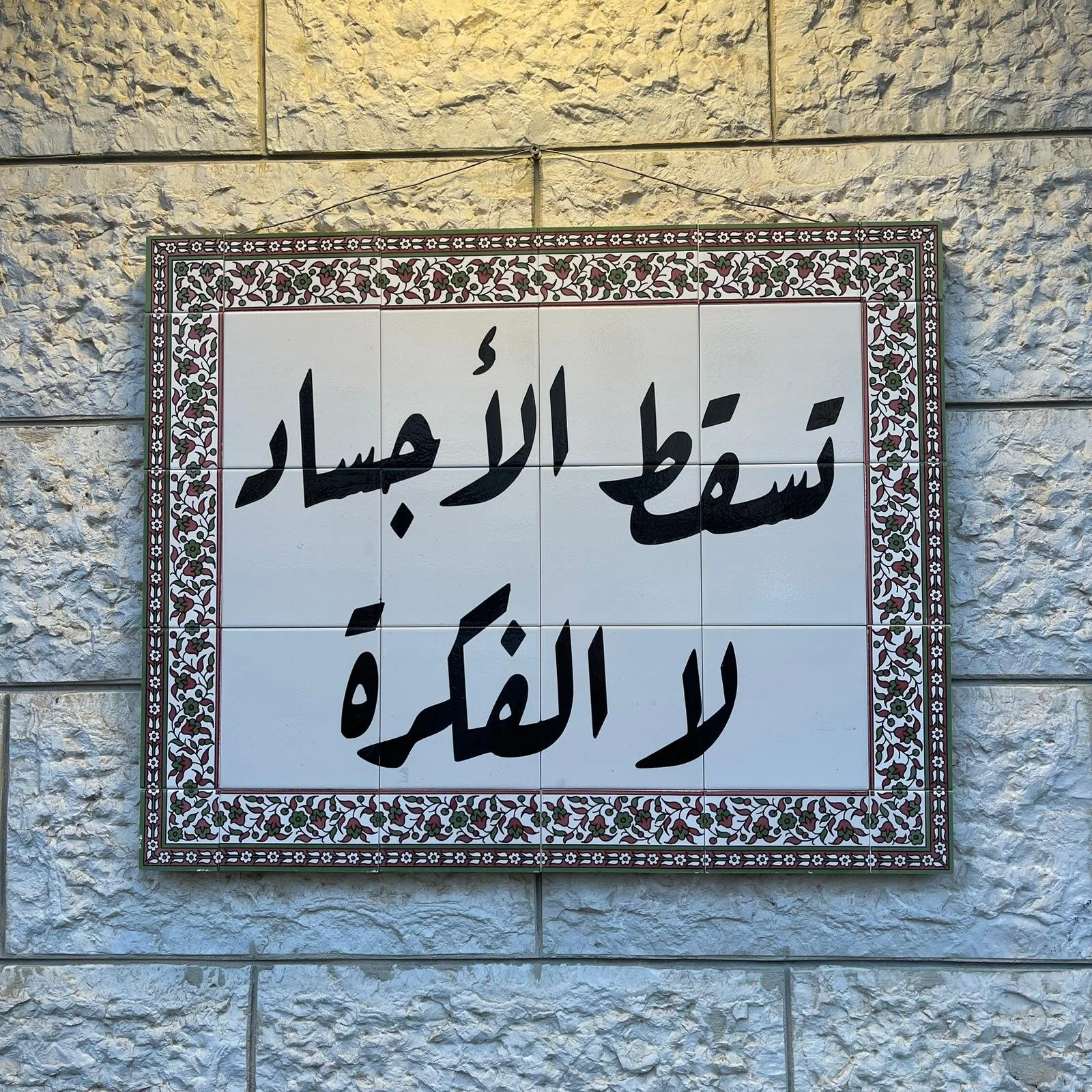Shahd Itbakhi
Shahd Itbakhi is an artist and conservator born in Hebron in 1997. She holds a BA in contemporary arts at Dar Al-Kalima University. Her artistic endeavours revolve around the central concept of time and the accumulated historical strata forming human memory, whether individual or collective.
She explores the relationship between humans and their environment, examining how repetitive and extraordinary events influence the experience of stability and turbulence emanating from personal, cultural, and political circumstances. Moreover, she exhibits a keen interest in the chronology of the self and psychological composition, investigating the demographic shifts over time within the local community.
Shahd perceives the changing impact of these elements as a primary catalyst in shaping a quasi- dystopian image of the present and the future. Employing a diverse artistic language in her work, ranging from video art and composite video to performance art and recycling art, she constructs artistic experiences that challenge conventional perceptions and delineate fresh portrayals of meaning and identity.
Top image: Memory (2023). Map (silk and mixed media).
“Memory (2023) questions individual memory; its composition; its time of occurrence; and its future impact. This artistic endeavor takes root in the profound depths of memory, the selfsame memory which coalesces and weaves itself with every deliberate and reiterated motion within the solitude of its self-imposed system. These oscillations sway between the system’s ribs, concentrated under the shadow of unique political circumstances.”
Image: Untitled. Wood, natural organic glue (rabbit glue), cloth.
“Colonialism has prolonged the life of industry, and taken from us the life of nature. Not only did the place shrink, but time also regressed to the pre-civilization era. This artistic experiment took a lot of time to implement its first stages, and was full of knowledge and building a new relationship with nature.
From the cement city to the natural mountain and plants that wrote a long life for our ancestors. The work wanted to imitate nature, instead of new feathers and colourful carpets, the great grandfather used to sleep on straw and stones, and drink from the sweetness of the land to return to dust.
Today, what will our graves contain after a shorter life more than plastic? Or cement remains?”
Image: Untitled. Ceramic.
“In conjunction with the ongoing genocide in Palestinian cities and of Palestinian identity over decades of Israeli occupation, especially in Gaza, and due to the lack of any form that can be used to express the horror of this genocide and the inability of language to express a kind of objection to the reality, the Israeli occupation has wanted to curb the Palestinians by drowning us in many successive concerns, and floating in the bubble of disguised peace, it was necessary to remind us that we are one bloody body, and that the wounds are one.
There is one killer, and many, many scattered bodies, which the entire world has allowed itself to see collapsing and scattered in the mouth of the civilized and of civilized time, criminalising the only existing truth. Bodies fall, not ideas. Resistance is an idea, and an idea does not die. This was the truth that the Palestinian confronted her colonisers with. It is one truth that can be seen, but how many bodies must fall for us to realize that we are an idea and must be immortalised?”
Learn more about Itbakhi’s work:



